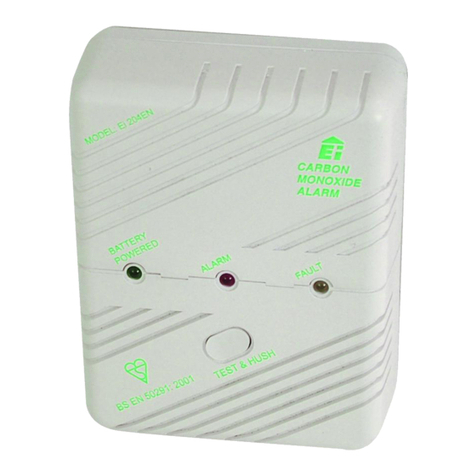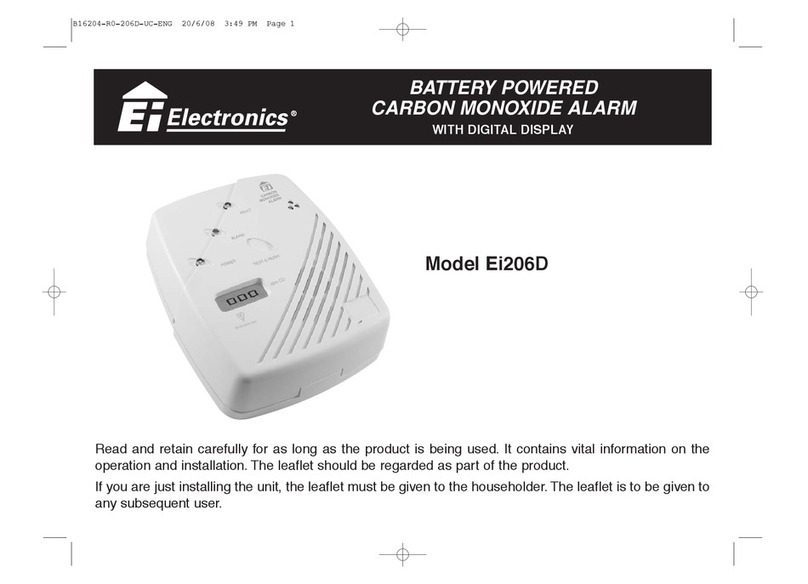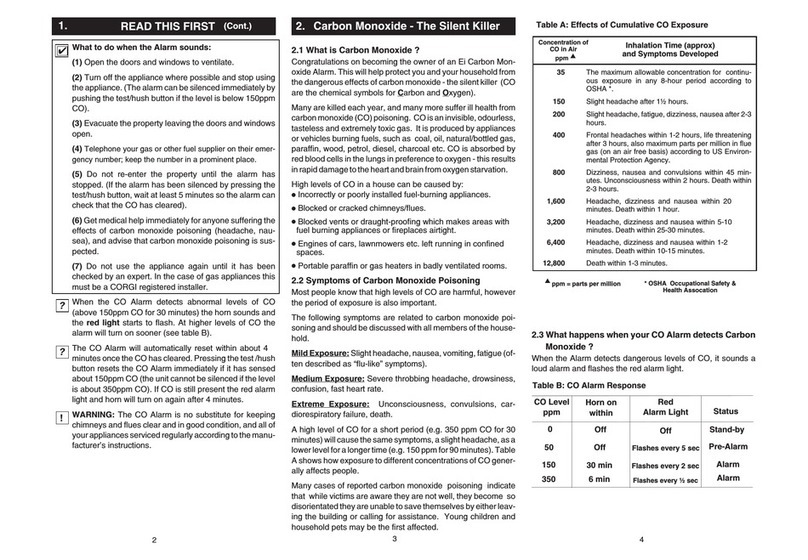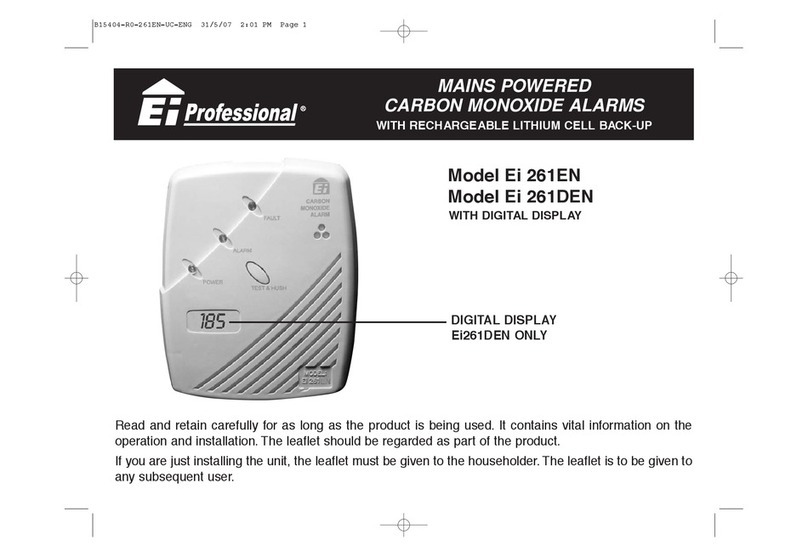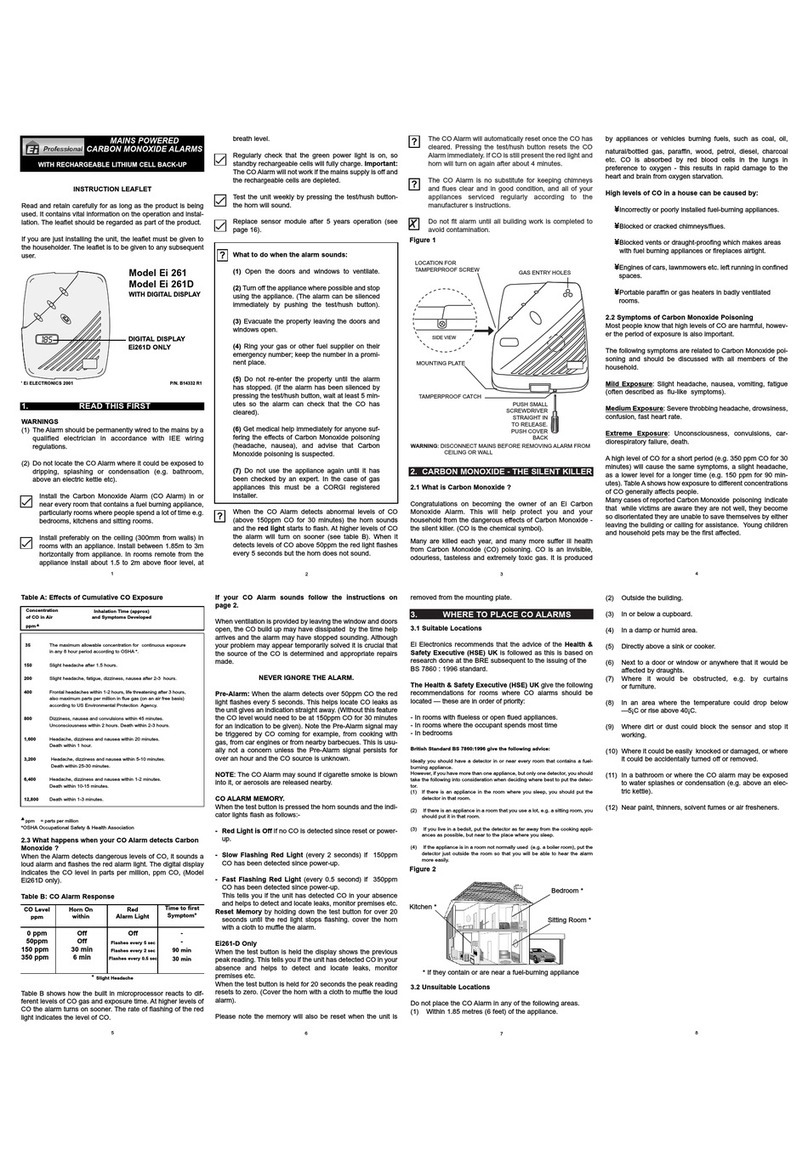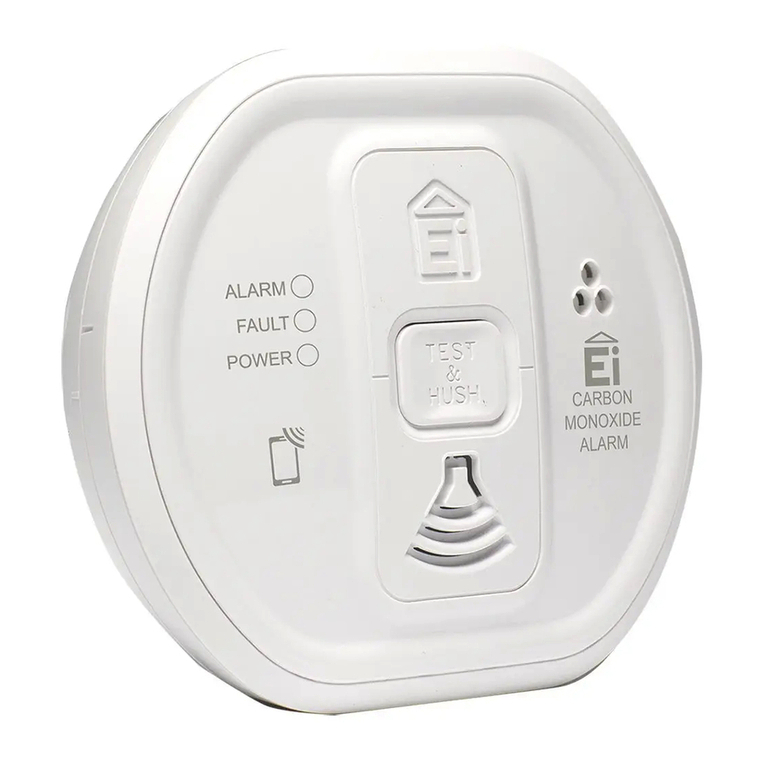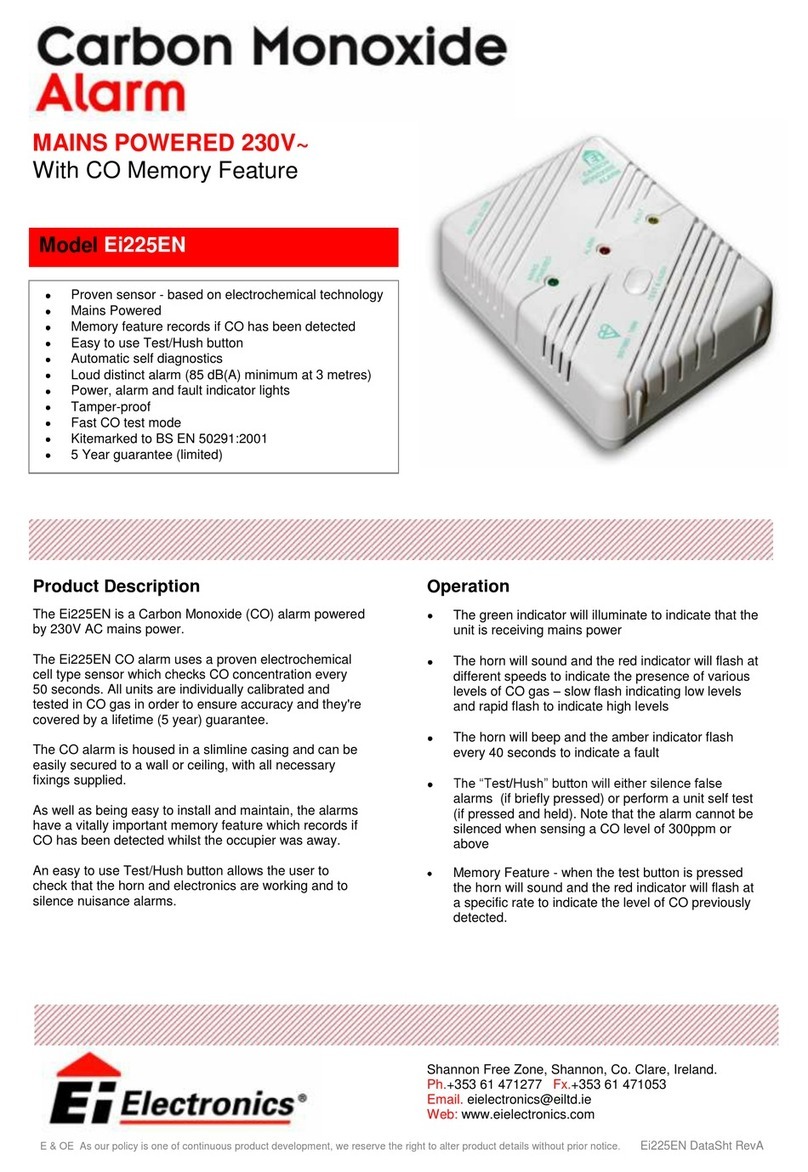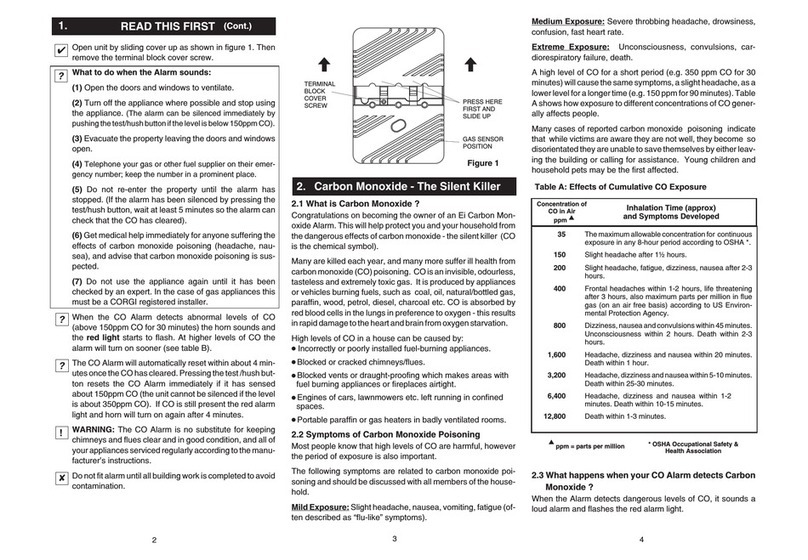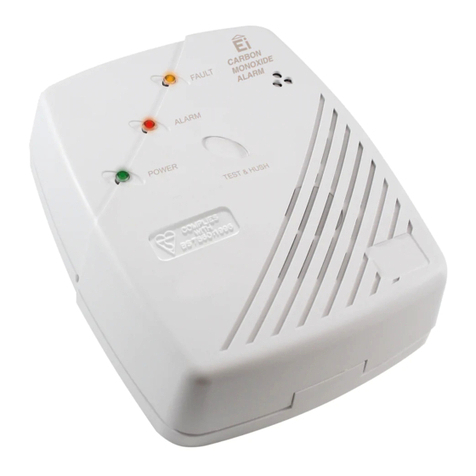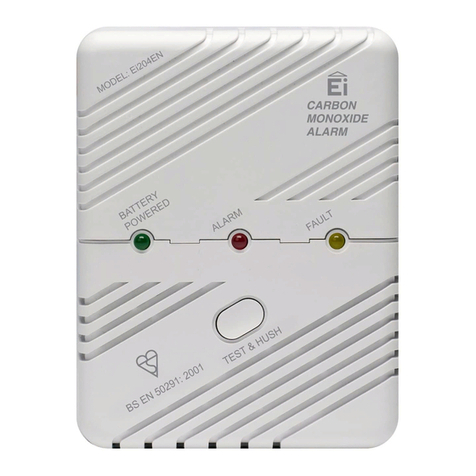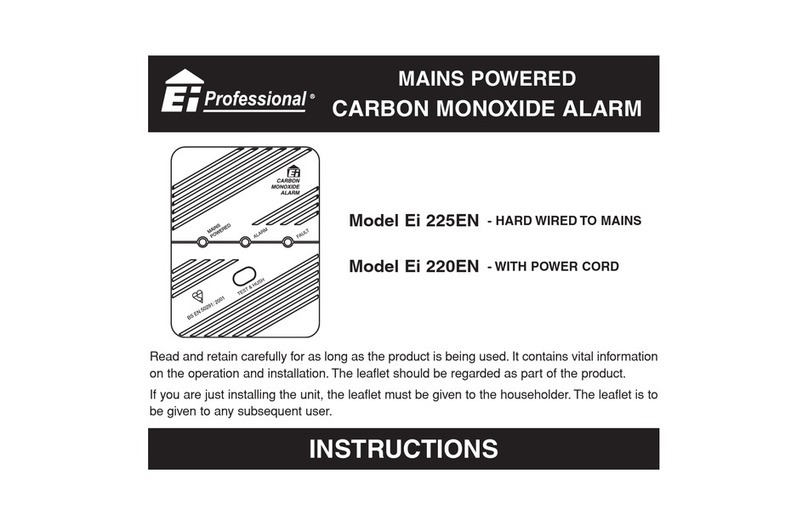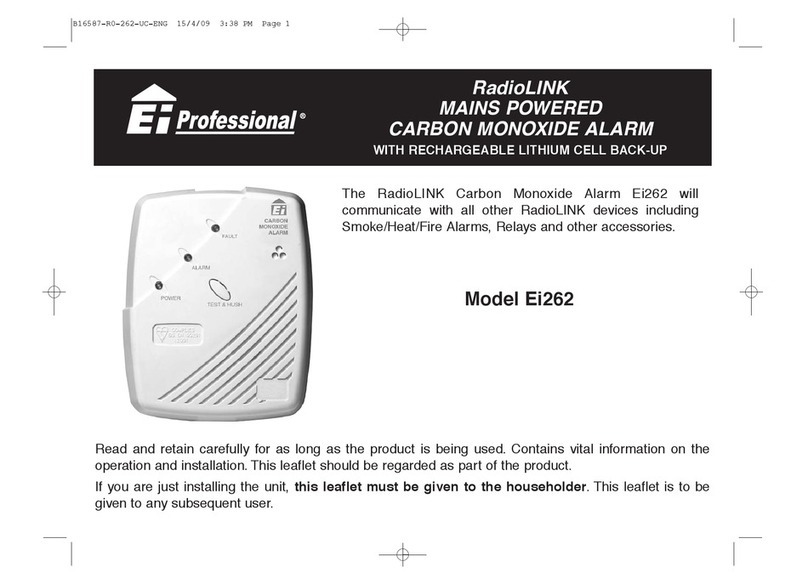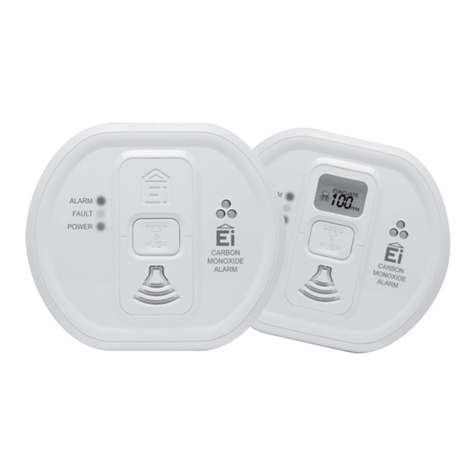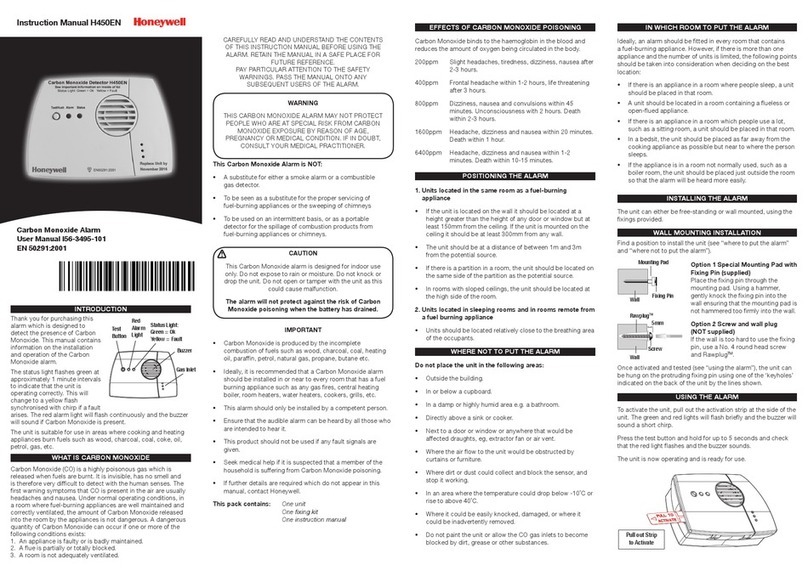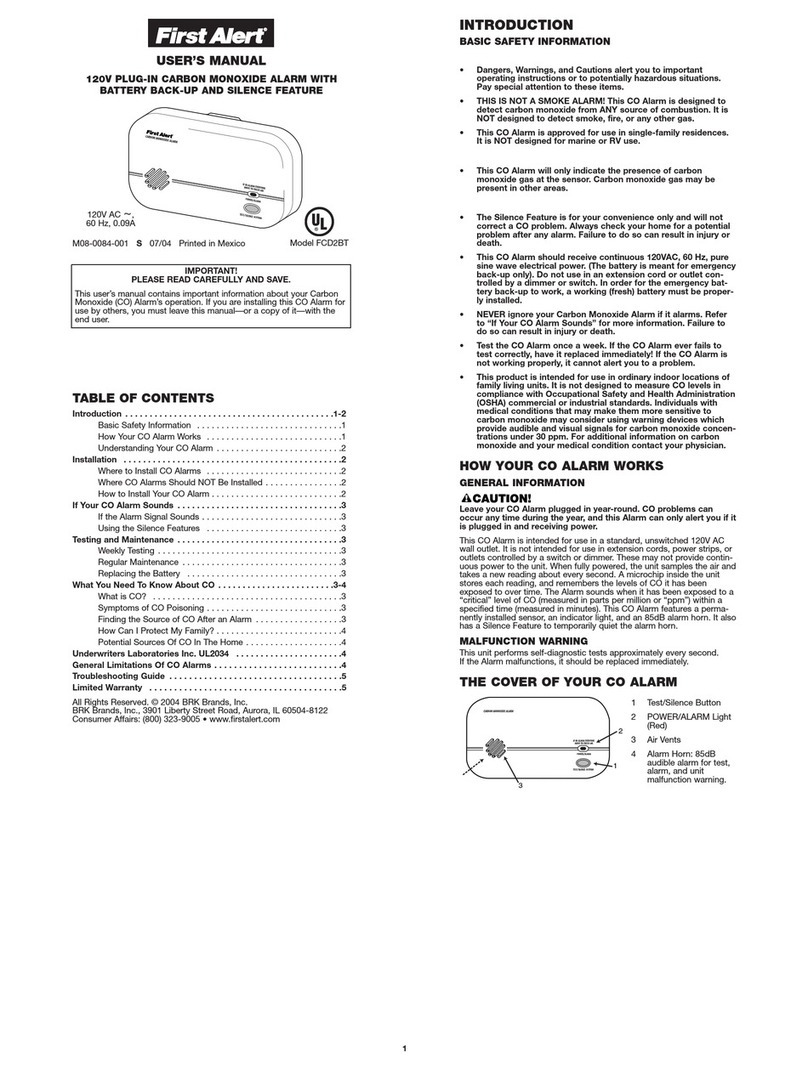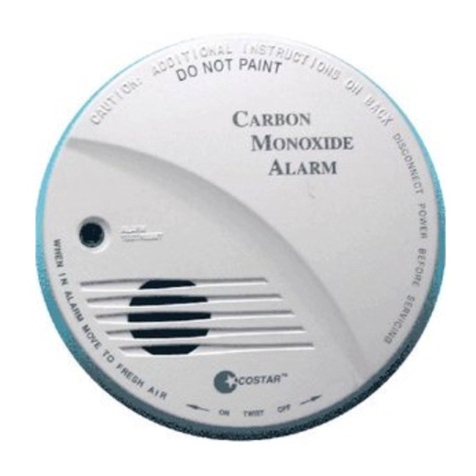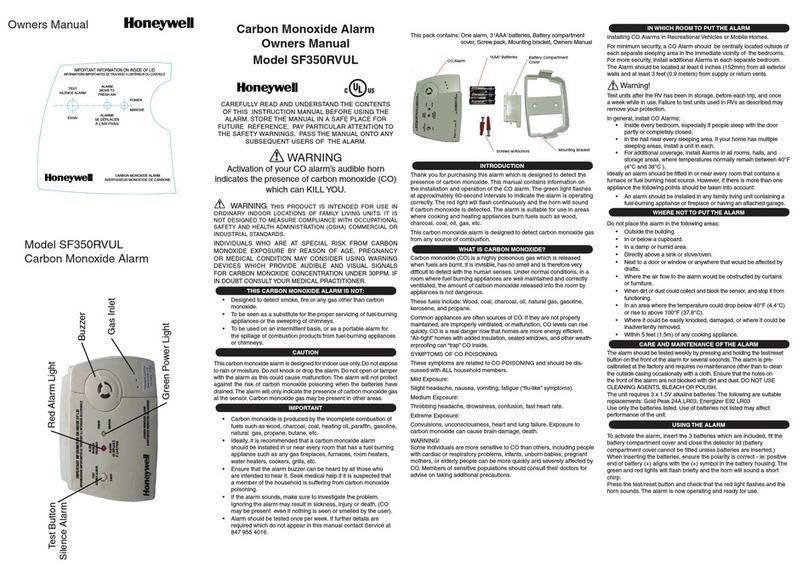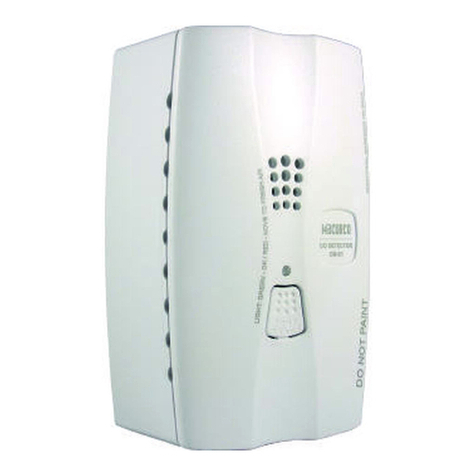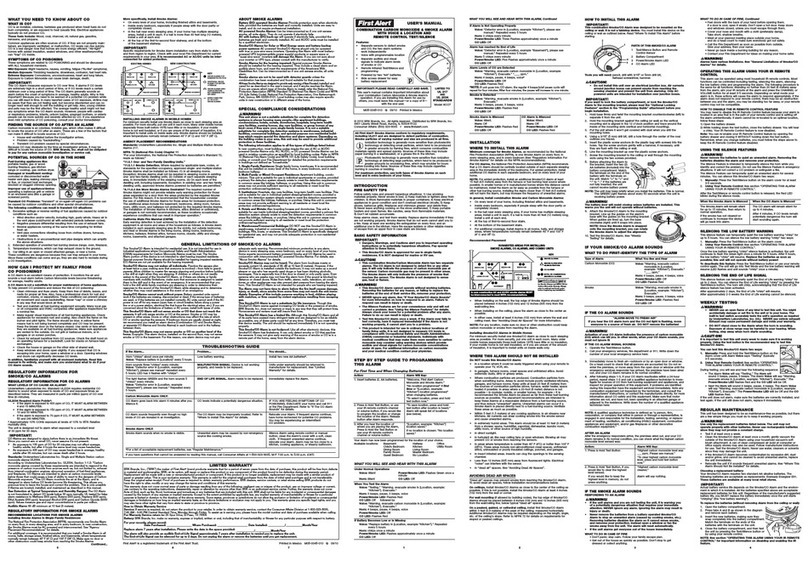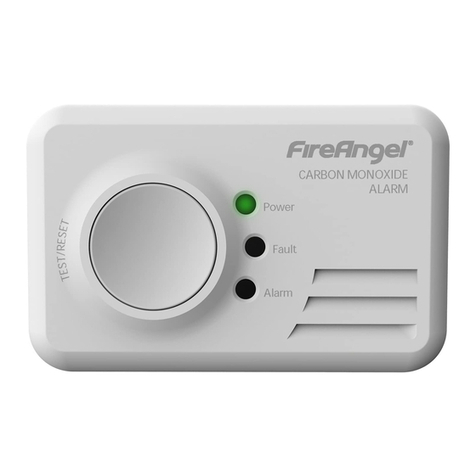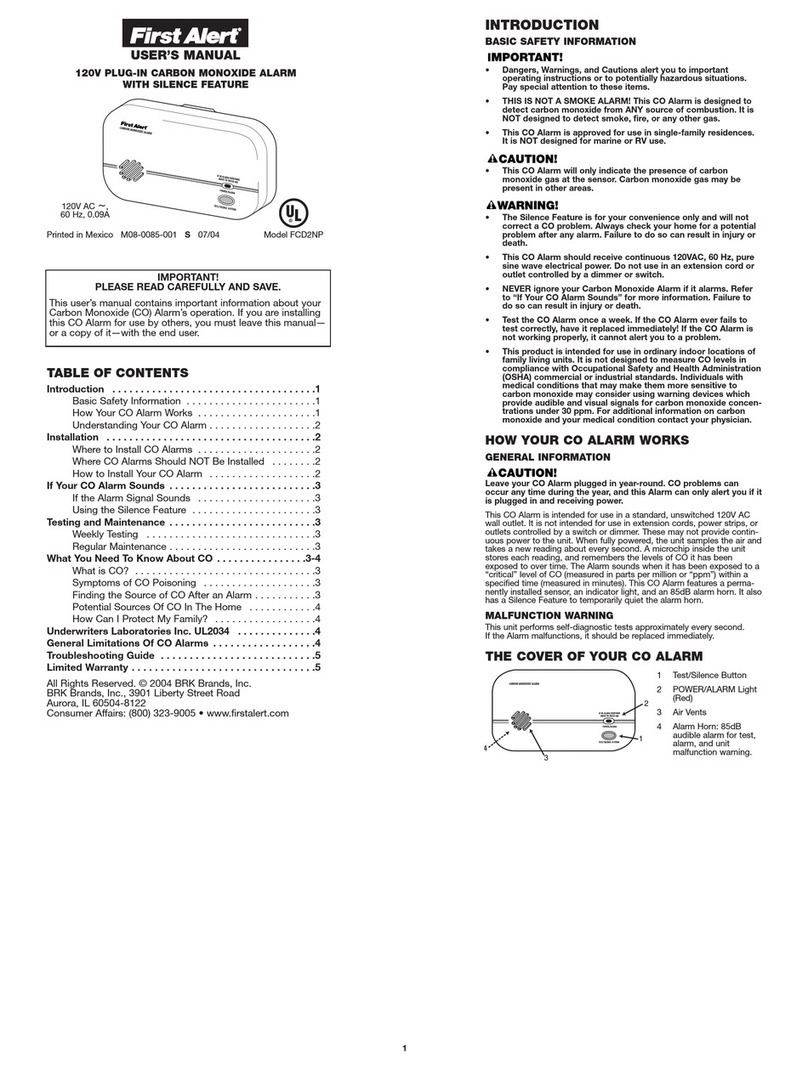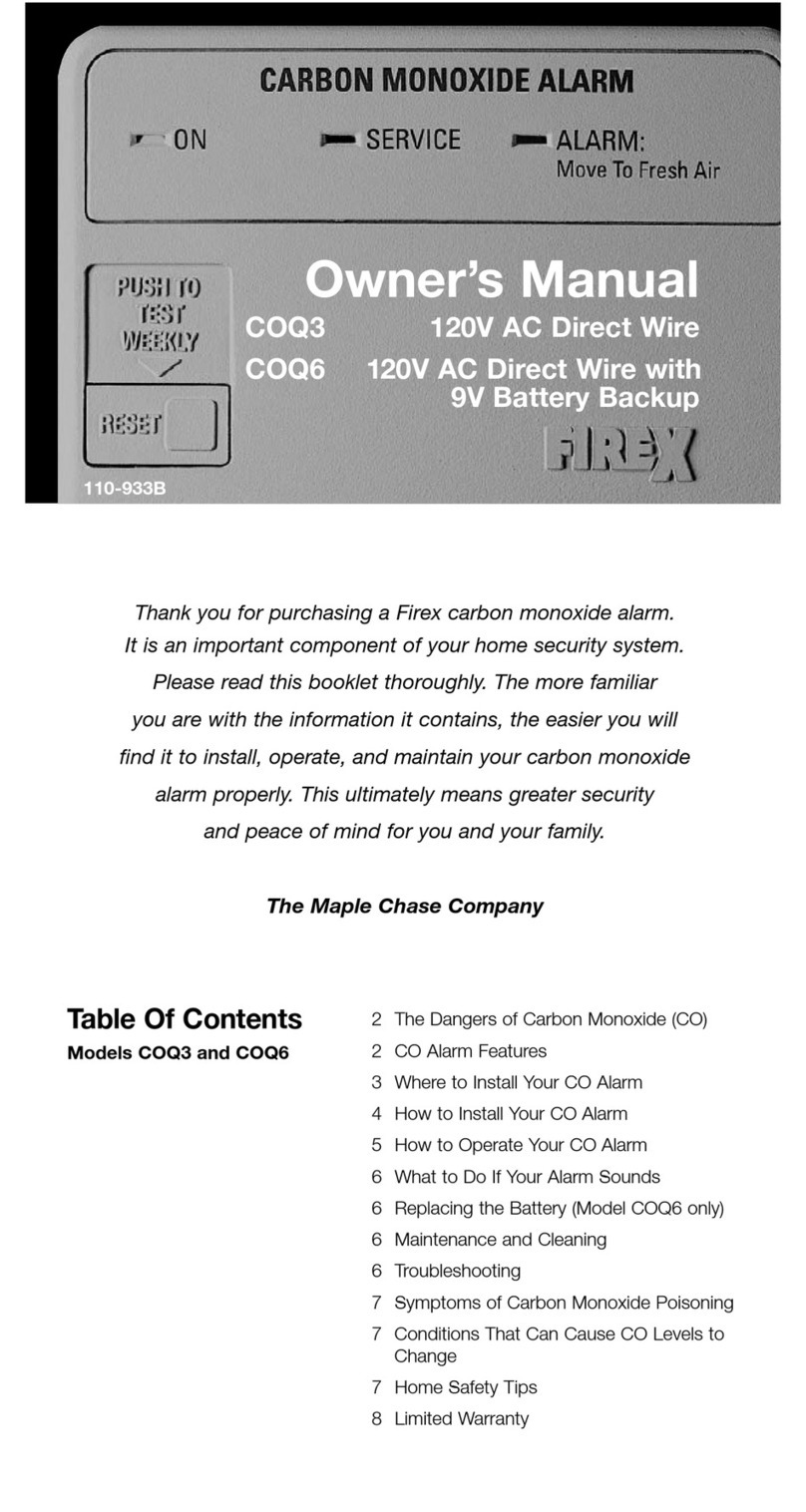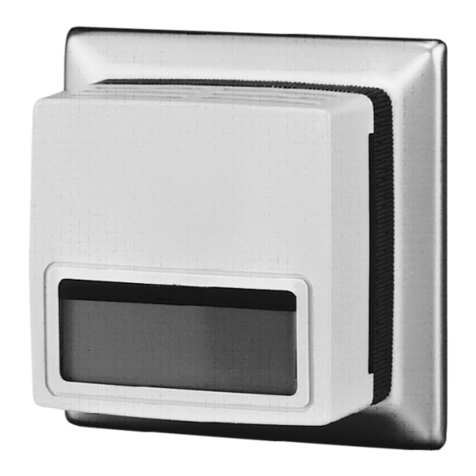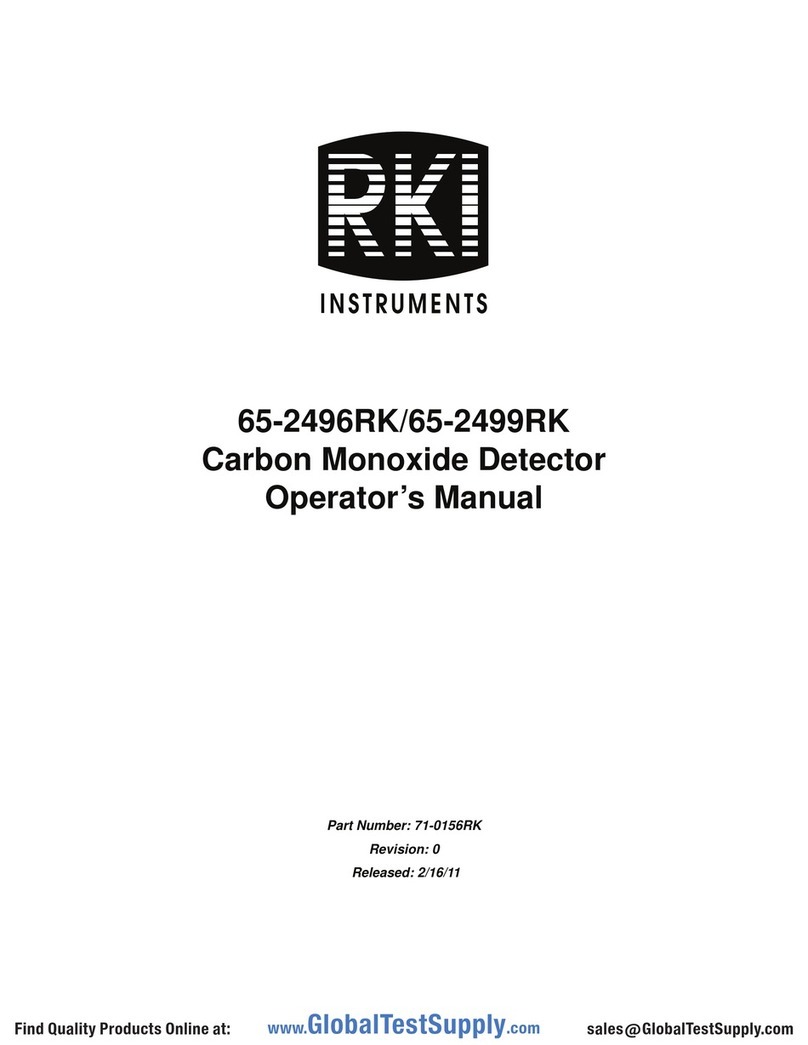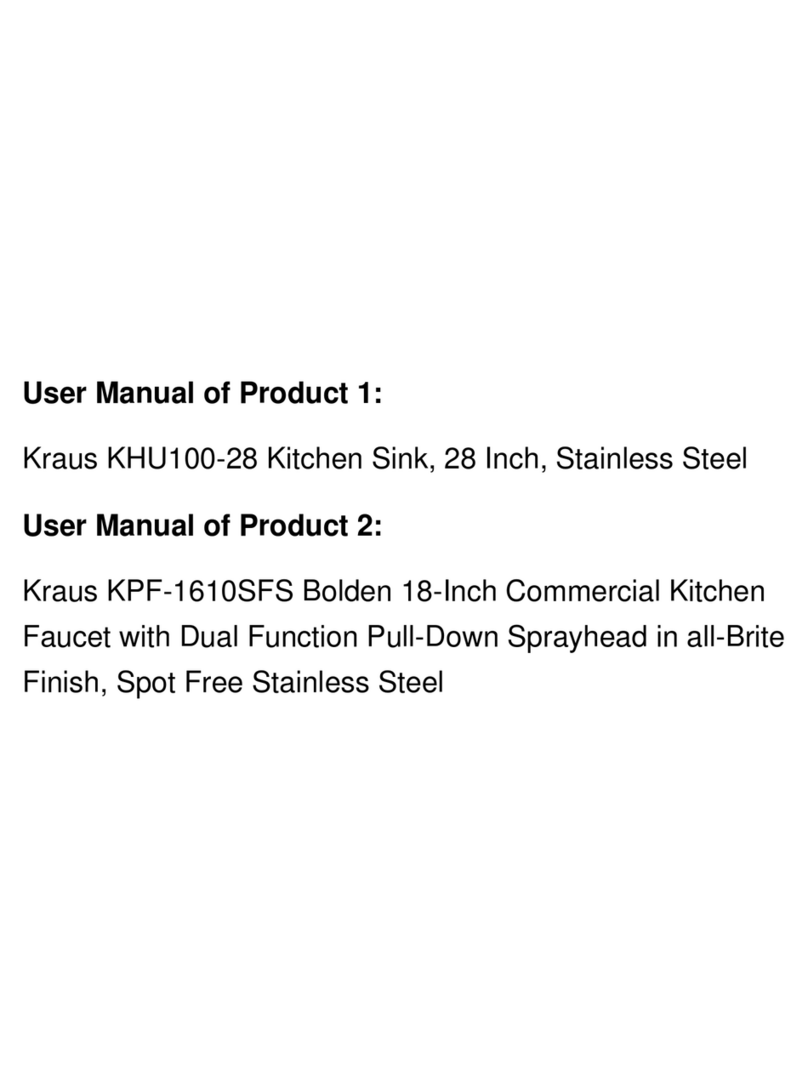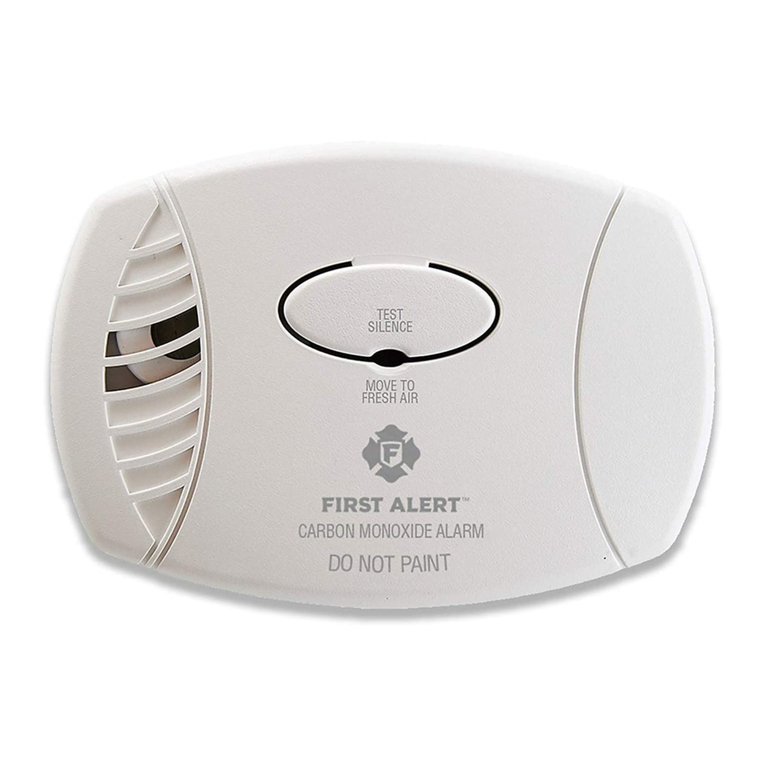
9
2. Installation
WARNING: The apparatus must be installed by a competent person.
2.1 Where to locate the CO Alarm?
As per EN 50292:2023, a Carbon Monoxide Alarm should be installed in every room
containing a fuel-burning appliance.
a) If a fuel-burning appliance is in a room that is part of the dwelling, the apparatus may
be interconnected to other apparatus or smoke alarms according to the requirements
of EN 50291-1:2018, 5.13, within the same dwelling, to ensure an appropriate early
warning for occupants:
— in rooms in which the occupant(s) spend considerable time whilst awake and from
which they may not be able to hear an alarm from apparatus in another part of the
premises, i.e. due to a complex and/ or large dwelling or closed doors between the
apparatus and other rooms;
— in every sleeping room.
b) If a dwelling is a bedsit (a single room serving as both sitting and bedroom), then the
apparatus should be positioned as far from the cooking appliances as possible but near
to where the person sleeps.
c) If a fuel-burning appliance is in a room which is not normally frequented (for example a
boiler room), the apparatus should be interconnected to e.g. smoke alarms or to ancillary
devices (siren, beacon) in other rooms and/ or circular spaces to ensure an appropriate
early warning is given for occupants elsewhere in the building. If CO is detected, it is
recommended that those interconnected devices operate with a sound pattern that is
different from i.e. a smoke or fire alarm.
